-
 Bitcoin
Bitcoin $107,247.2038
-0.18% -
 Ethereum
Ethereum $2,424.7947
0.34% -
 Tether USDt
Tether USDt $1.0003
-0.02% -
 XRP
XRP $2.1171
-3.33% -
 BNB
BNB $645.6618
0.06% -
 Solana
Solana $141.5898
-1.32% -
 USDC
USDC $0.9998
0.00% -
 TRON
TRON $0.2710
-0.41% -
 Dogecoin
Dogecoin $0.1602
-2.99% -
 Cardano
Cardano $0.5553
-2.28% -
 Hyperliquid
Hyperliquid $36.3019
-2.42% -
 Bitcoin Cash
Bitcoin Cash $491.7212
2.04% -
 Chainlink
Chainlink $13.0810
-0.23% -
 Sui
Sui $2.6080
-5.06% -
 UNUS SED LEO
UNUS SED LEO $9.0040
-0.05% -
 Stellar
Stellar $0.2350
-3.06% -
 Avalanche
Avalanche $17.2294
-2.31% -
 Toncoin
Toncoin $2.8075
-1.05% -
 Shiba Inu
Shiba Inu $0.0...01121
-3.43% -
 Litecoin
Litecoin $84.2215
-0.32% -
 Hedera
Hedera $0.1429
-4.88% -
 Monero
Monero $312.2199
-0.90% -
 Dai
Dai $0.9997
-0.01% -
 Ethena USDe
Ethena USDe $0.9999
-0.02% -
 Polkadot
Polkadot $3.2973
-2.60% -
 Bitget Token
Bitget Token $4.4742
3.12% -
 Pi
Pi $0.5631
-10.10% -
 Uniswap
Uniswap $6.7817
-2.06% -
 Pepe
Pepe $0.0...09252
-3.74% -
 Aave
Aave $251.3830
-2.24%
Review of currency trading band skill rules
Understanding the different trading strategies, stop-loss calculations, risk management techniques, and emotional control elements is crucial for successful currency trading band skill implementation.
Jan 11, 2025 at 02:40 am
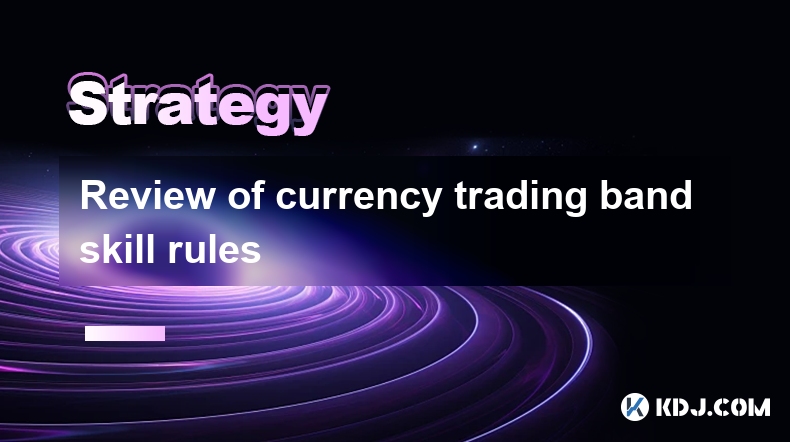
Review of Currency Trading Band Skill Rules
Key Points
- Understand the concept of currency trading bands
- Identify different strategies for trading within bands
- Learn how to calculate and use stop-loss levels
- Manage risk and emotions when trading currency bands
Introduction
Currency trading bands are a popular technical analysis tool used to identify trading opportunities in the foreign exchange (forex) market. These bands help traders visualize support and resistance levels for a currency pair, providing insights into potential price movements. This article reviews the skill rules for trading currency bands, covering strategies, risk management, and emotional control.
Trading Strategies
- Bollinger Bands: A widely used band indicator that measures volatility and helps identify overbought and oversold conditions. Traders buy when prices approach the lower band and sell when prices reach the upper band.
- Keltner Channels: Similar to Bollinger Bands, but with a more dynamic calculation that incorporates volatility and trading volume. Buy when prices cross above the upper band and sell when they cross below the lower band.
- Ichimoku Cloud: A comprehensive indicator that incorporates multiple timeframe analysis and market momentum. Traders buy when prices cross above the Tenkan-Sen line within the cloud and sell when prices cross below it.
Stop-Loss Levels
- Static Stop-Loss: A predetermined price level below (for longs) or above (for shorts) which, when reached, triggers an automatic sell order to minimize losses. It should be placed outside the bands to avoid premature exits.
- Trailing Stop-Loss: A dynamic stop-loss that follows the market price. As the trade moves in a favorable direction, the trailing stop-loss moves closer to the market price, protecting profits while minimizing risk.
- Volatility Stop-Loss: A stop-loss that adjusts based on market volatility. During periods of high volatility, the stop-loss is widened to accommodate larger price fluctuations, while during low volatility, it is tightened to prevent unnecessary exits.
Risk Management
- Define Risk Tolerance: Before trading currency bands, determine how much capital you are willing to risk. This will guide your trading decisions and prevent emotional biases.
- Use Leverage Prudently: Leverage can amplify both gains and losses, so use it carefully and only within your risk tolerance.
- Monitor Position Size: Manage the amount of money you commit to each trade based on your risk tolerance and account balance. Avoid overleveraging and risking too much on a single trade.
Emotional Control
- Avoid FOMO: "Fear of missing out" can lead to impulsive trading decisions. Wait for confirmation before entering trades and stick to your strategy.
- Manage Fear and Greed: Fear can lead to premature exits and greed can lead to overtrading. Stay disciplined and follow your trading plan.
- Take Breaks: Trading can be stressful. Take regular breaks to clear your mind and avoid emotional decisions.
FAQs
Q: What are some common mistakes in currency band trading?
A: Overtrading, using leverage excessively, chasing losses, and ignoring risk management are some common mistakes.
Q: How can I improve my currency band trading skills?
A: Practice using demo accounts, study technical analysis, and develop a solid trading plan.
Q: What other indicators can be used with currency bands?
A: Moving averages, candlestick patterns, and trend indicators can complement currency band analysis.
Disclaimer:info@kdj.com
The information provided is not trading advice. kdj.com does not assume any responsibility for any investments made based on the information provided in this article. Cryptocurrencies are highly volatile and it is highly recommended that you invest with caution after thorough research!
If you believe that the content used on this website infringes your copyright, please contact us immediately (info@kdj.com) and we will delete it promptly.
- Dogecoin to $1? Analysts Weigh In on DOGE's Breakout Potential
- 2025-06-27 10:30:12
- Memecoins, Growth, and Analysts: Decoding the Latest Trends
- 2025-06-27 10:30:12
- Arbitrum (ARB) Price Forecast 2025: Bullish Breakout or Sideways Shuffle?
- 2025-06-27 11:10:15
- Dogecoin, Meme Coins, and the Rise of Neo Pepe: What's Hot in Crypto?
- 2025-06-27 10:50:12
- Arctic Pablo Coin: The Meme Coin Primed for a 2025 Takeover?
- 2025-06-27 11:10:15
- Trump-Backed Stablecoin USD1: Audit Incoming, Aqua 1 Invests $100M in WLFI
- 2025-06-27 11:15:12
Related knowledge
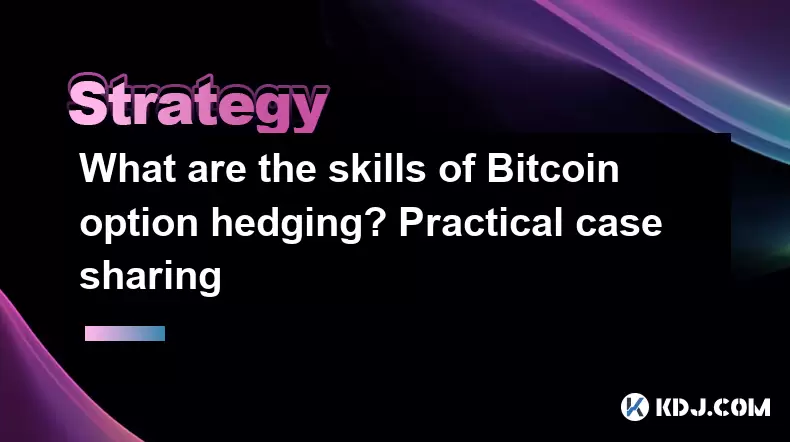
What are the skills of Bitcoin option hedging? Practical case sharing
Jun 24,2025 at 04:01pm
Understanding Bitcoin Option HedgingBitcoin option hedging is a risk management strategy used by traders and investors to protect their positions in the volatile cryptocurrency market. By using options, individuals can limit potential losses while retaining the opportunity for profit. In essence, it allows one to insulate against adverse price movements...
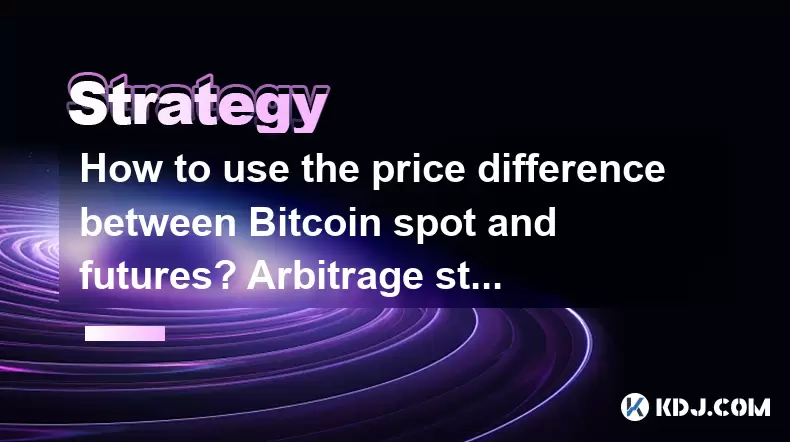
How to use the price difference between Bitcoin spot and futures? Arbitrage strategy
Jun 20,2025 at 02:56pm
Understanding Bitcoin Spot and Futures MarketsTo effectively leverage arbitrage opportunities between Bitcoin spot and futures markets, it's essential to understand the fundamental differences between these two types of markets. The spot market refers to the direct buying and selling of Bitcoin for immediate delivery at the current market price. In cont...
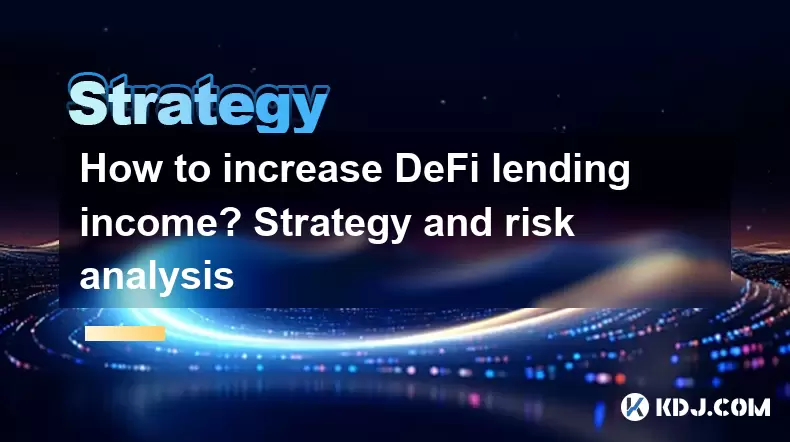
How to increase DeFi lending income? Strategy and risk analysis
Jun 24,2025 at 02:08pm
Understanding DeFi Lending and Its Income PotentialDeFi (Decentralized Finance) lending has emerged as a popular way to earn passive income in the cryptocurrency space. Unlike traditional banking systems, DeFi lending platforms allow users to lend their crypto assets directly to borrowers without intermediaries. The lenders earn interest based on the su...
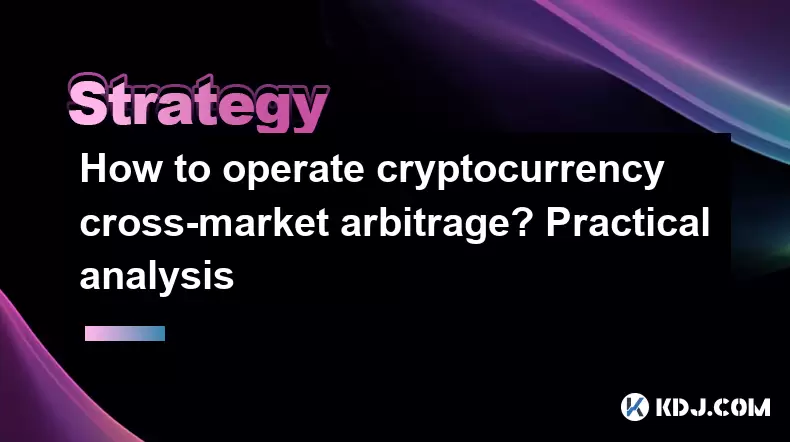
How to operate cryptocurrency cross-market arbitrage? Practical analysis
Jun 23,2025 at 04:01am
Understanding Cryptocurrency Cross-Market ArbitrageCryptocurrency cross-market arbitrage involves taking advantage of price differences for the same digital asset across different exchanges. The core idea is to buy low on one exchange and sell high on another, capturing the profit from the discrepancy. This strategy relies heavily on real-time market da...

How to make profits from high-frequency cryptocurrency trading? Sharing core skills
Jun 19,2025 at 05:07pm
Understanding High-Frequency Cryptocurrency TradingHigh-frequency trading (HFT) in the cryptocurrency market involves executing a large number of trades at extremely fast speeds, often within milliseconds. This method relies on small price discrepancies across exchanges or within a single exchange’s order book. Traders use complex algorithms and ultra-l...

What are the methods of cryptocurrency quantitative trading? Detailed analysis
Jun 22,2025 at 11:07pm
Understanding the Core of Cryptocurrency Quantitative TradingCryptocurrency quantitative trading refers to the use of mathematical models and algorithms to execute trades in the digital asset market. Unlike traditional discretionary trading, which relies heavily on human judgment, quantitative trading leverages data-driven strategies to identify profita...

What are the skills of Bitcoin option hedging? Practical case sharing
Jun 24,2025 at 04:01pm
Understanding Bitcoin Option HedgingBitcoin option hedging is a risk management strategy used by traders and investors to protect their positions in the volatile cryptocurrency market. By using options, individuals can limit potential losses while retaining the opportunity for profit. In essence, it allows one to insulate against adverse price movements...

How to use the price difference between Bitcoin spot and futures? Arbitrage strategy
Jun 20,2025 at 02:56pm
Understanding Bitcoin Spot and Futures MarketsTo effectively leverage arbitrage opportunities between Bitcoin spot and futures markets, it's essential to understand the fundamental differences between these two types of markets. The spot market refers to the direct buying and selling of Bitcoin for immediate delivery at the current market price. In cont...

How to increase DeFi lending income? Strategy and risk analysis
Jun 24,2025 at 02:08pm
Understanding DeFi Lending and Its Income PotentialDeFi (Decentralized Finance) lending has emerged as a popular way to earn passive income in the cryptocurrency space. Unlike traditional banking systems, DeFi lending platforms allow users to lend their crypto assets directly to borrowers without intermediaries. The lenders earn interest based on the su...

How to operate cryptocurrency cross-market arbitrage? Practical analysis
Jun 23,2025 at 04:01am
Understanding Cryptocurrency Cross-Market ArbitrageCryptocurrency cross-market arbitrage involves taking advantage of price differences for the same digital asset across different exchanges. The core idea is to buy low on one exchange and sell high on another, capturing the profit from the discrepancy. This strategy relies heavily on real-time market da...

How to make profits from high-frequency cryptocurrency trading? Sharing core skills
Jun 19,2025 at 05:07pm
Understanding High-Frequency Cryptocurrency TradingHigh-frequency trading (HFT) in the cryptocurrency market involves executing a large number of trades at extremely fast speeds, often within milliseconds. This method relies on small price discrepancies across exchanges or within a single exchange’s order book. Traders use complex algorithms and ultra-l...

What are the methods of cryptocurrency quantitative trading? Detailed analysis
Jun 22,2025 at 11:07pm
Understanding the Core of Cryptocurrency Quantitative TradingCryptocurrency quantitative trading refers to the use of mathematical models and algorithms to execute trades in the digital asset market. Unlike traditional discretionary trading, which relies heavily on human judgment, quantitative trading leverages data-driven strategies to identify profita...
See all articles
























































































